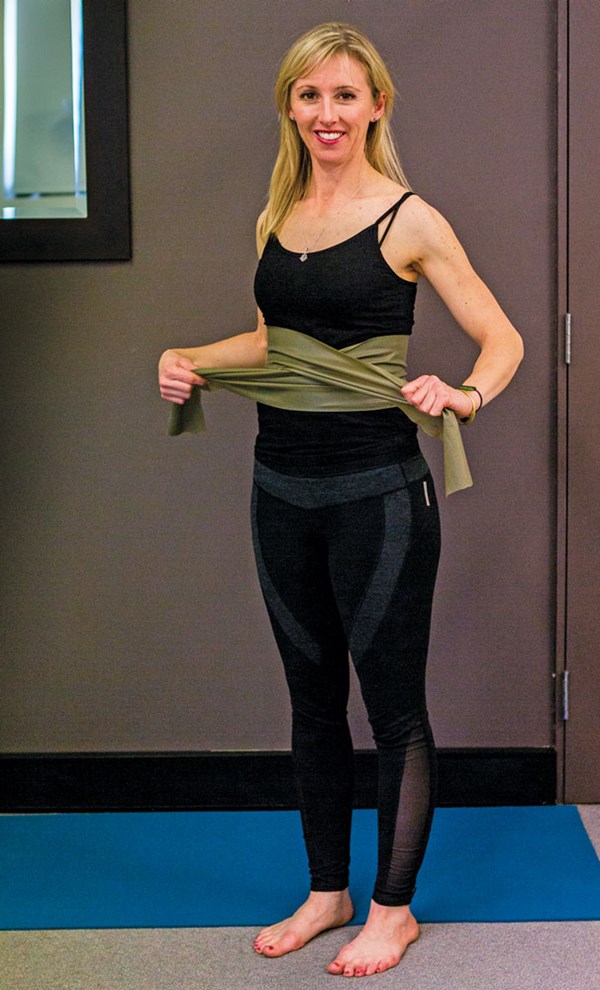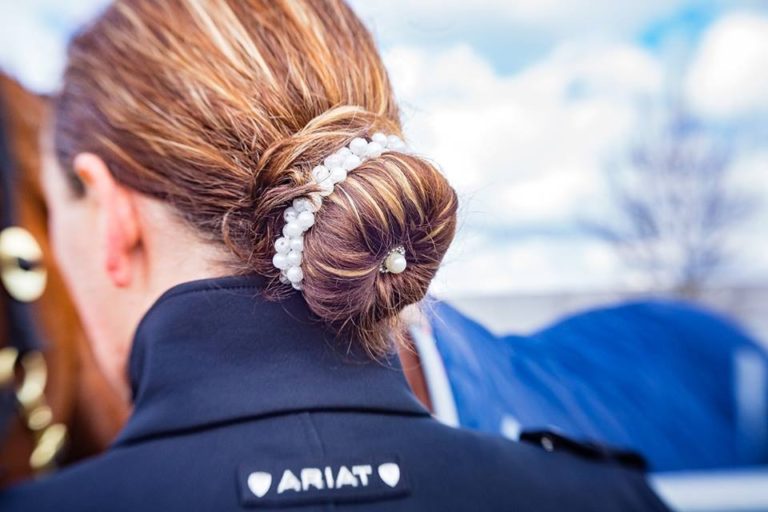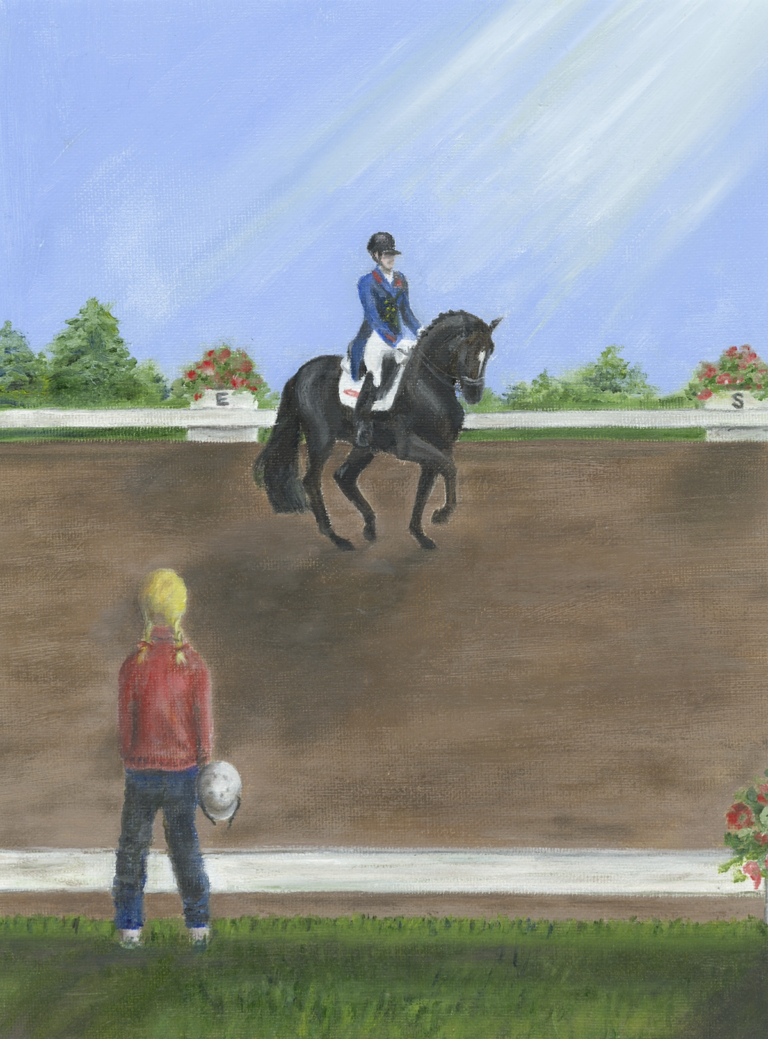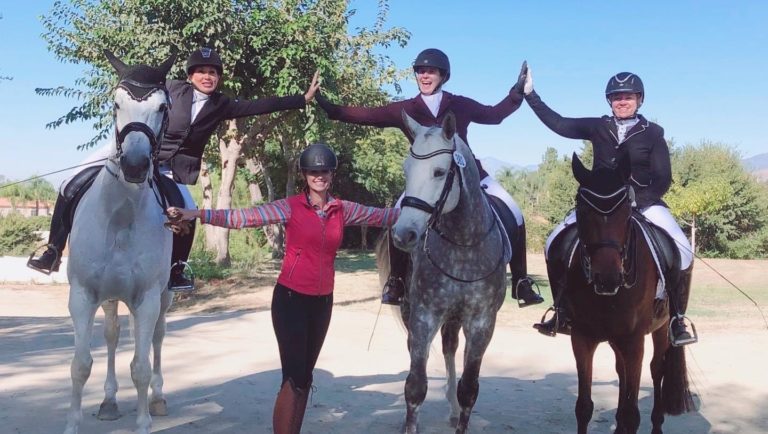
Breathing probably shouldn’t need to be talked about. After all, we do it every moment of every day without thinking. What’s there to know? Surely we’re experts from all the practice! So why does it prove such a problem for riders?
When we are on horses, our bodies go into survival mode to a greater or lesser extent. We are on a big moving animal while, at the same time, our legs are taken away as we are connected to our horse by our seat bones. This is a very precarious situation for our body to be in and our brain is well aware of it.
Our bodies react to this situation by tightening up, our heart rate increases and our breathing becomes shallow. The snowball effect of shallow breathing is that less oxygen reaches our blood cells, fatiguing muscles and diminishing endurance while increasing anxiety and poor concentration. This all negatively affects our technique and ability to ride well. In this situation, we are likely to become more problem-focused than solution-focused.
We need good breathing to help keep an efficient interchange between oxygen and carbon dioxide in the cells of our body. A good exchange between oxygen and carbon dioxide helps to clear out toxins, which allows our muscles to work efficiently for longer. This is important in an endurance activity like riding. It means that muscles don’t start to tighten and grip involuntarily, so we can continue to ride with balance rather than strength. Tension in our body eventually leads to muscle weakness, and both lead to decreased ability to communicate with our horse. Our body alignment and stability become compromised as well. Gripping limbs also inhibit our horse’s breathing as we clamp onto his ribs with our legs. Shallow breathing can also affect posture. It can cause us to lift our shoulders rather than use the full capacity of our lungs, right down to the lower lobes. The lifting of our shoulders causes neck tension, restricting blood flow to the brain, and also hinders shoulder stability, which will lead to us to trying to hold our horse more with our arms, creating a blocked, hard hand.
Good deep breathing softens your body and also lowers the center of gravity back into your pelvis, both of which make you a much easier load for the horse to carry as you engage your core correctly and swing with the horse.
Horses are so sensitive that they can perceive the slightest change in our body. Holding your breath will quicken your heart rate. We have three pulse points down our leg that are, therefore, close to the horse. Sometimes the horse is more aware of what’s going on with our bodies than we are. Next time your horse gets tense, do a quick check of your body to make sure the problem isn’t your tension.
When our breathing is effective, we will stay calmer under pressure, as when we compete. Good breathing, allowing good oxygen delivery to the brain, keeps us focused. It’s much easier to remember your test in this state. It also means that your reaction time remains fast, so problems can be fixed quickly before they become a big deal. We will stay in the present moment better and in tune with our horse.
The best way to improve breathing is awareness. Be still and take a moment to focus on how you breathe, what areas tighten and how long it takes you to fully inhale and exhale. Try to breathe in and out through your nose, keeping your tongue gently touching the top of your palate. In more extreme exercise conditions, it can be beneficial to breathe in through the nose and out through the mouth, with the exhale taking place during the biggest-effort part of the exercise. This helps engage important core muscles.
An exercise to help with this is to breathe in through your nose and feel your lungs expanding in all directions, remembering that your lungs aren’t just at the front of your body. Feel the sides of your body move outward as well as your back, with your shoulders remaining relaxed. Make sure you exhale fully so as not to experience chest tightness and hyperinflation. Wrapping a resistance band low around your rib cage as you breathe can give good feedback as to whether your lungs are working in an efficient way.

Remember, the rib cage is moved by muscles, too, so if deep breathing is new to you, the muscles need time to tone and work properly like any other muscle. The more practice you do, the better functioning the muscles will be. Belly breathing isn’t so helpful in riding as we need to keep our core engaged to keep our pelvis stable. Focus instead on the lungs and the diaphragm.
When you are riding and you can feel yourself get short of breath, you can try breathing in time with your half halts. Breathe out as you half halt, and this will not only improve the effect of your aids and deepen your seat, but will get your body more relaxed, allowing you to hold your horse from your deep core muscles rather than your external global muscles.
Another trick is to do a breathing reset. Breathe in for a count of 3, 6 or 9, whichever is most comfortable, hold for the same number of counts, breathe out for the same count and hold for the same count. Do this three to five times and see how quickly your breath returns to being deep and slow. This can be helpful at a show when you are dealing with the franticness of the warm-up arena or just before entering the competition arena.Off-the-horse work using such practices as Qigong, Tai Chi and Pilates can not only improve your breathing technique, but also your body awareness and control, as breath is integral to each of these exercise techniques.
Over the last 12 months, I have given you exercises that isolate specific riding muscles and test other aspects of your riding, such as balance and reaction, while helping to get you out of your comfort zone. This will not only improve your body awareness and control but also your mental focus. It may also help you understand what your horse experiences during his training sessions. After all, you are your horse’s personal trainer. So take it easy on yourself and your equine partner, work smart and remember why we started this to begin with— to challenge ourselves and have fun!
Rebecca Ashton is a qualified Pilates instructor, a British Horse Society-trained instructor and an Equestrian Australia-accredited dressage coach. She has competed through Intermediaire II, working with riders such as Anky van Grunsven and earning championship titles in the small tour. She lives in Australia and teaches clinics internationally (equestelite.com).











